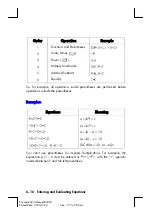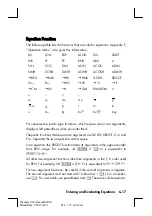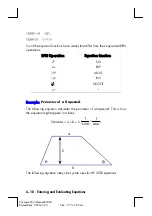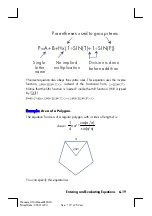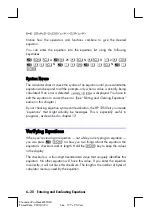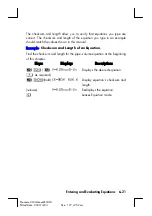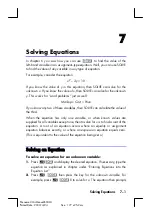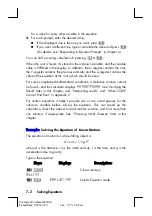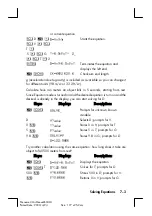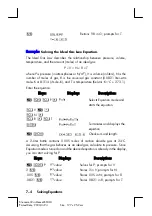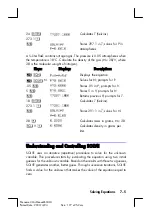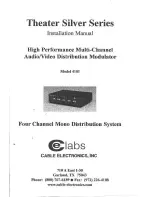
6–12 Entering and Evaluating Equations
File name 32sii-Manual-E-0424
Printed Date : 2003/4/24 Size : 17.7 x 25.2 cm
The following table shoves the two ways to evaluate equations.
Type of Equation
Result for
Result
for
W
Equality:
g (x)
=
f(x)
Example:
x
2
+
y
2
=
r
2
g (x)
–
f(x)
x
2
+
y
2
–
r
2
Assignment:
y
=
f(x)
Example:
A
= 0.5
×
b
x
h
f(x)
0.5
×
b
×
h
y
–
f(x)
A
– 0.5
×
b
×
h
Expression:
f(x)
Example:
x
3
+ 1
f(x)
x
3
+ 1
Also stores the result in the left–hand variable, A for example.
To evaluate an equation:
1.
Display the desired equation. (See "Displaying and Selecting Equations"
above.)
2.
Press
or
W
. The equation prompts for a value for each
variable needed. (If you've changed the number base, it's automatically
changed back to base 10.)
3.
For each prompt, enter the desired value:
If the displayed value is good, press
f
.
If you want, a different value, type the value and press
f
. (Also see
"Responding to Equation Prompts" later in this chapter.)
The evaluation of an equation takes no values from the stack — it uses only
numbers in the equation and variable values. The value of the equation is
returned to the X–register. The LAST X register isn't affected.
Using ENTER for Evaluation
If an equation is displayed in the equation list, you can press
to
evaluate the equation. (If you're in the process of
typing
the equation,
pressing
only
ends
the equation—it doesn't evaluate it.)



















